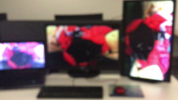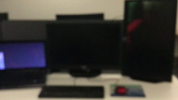[ 120.045]
X.Org X Server 1.20.11
X Protocol Version 11, Revision 0
[ 120.045] Build Operating System: FreeBSD 14.0-CURRENT amd64
[ 120.045] Current Operating System: FreeBSD mowa219-gjp4-freebsd-d31121-mobile 14.0-CURRENT FreeBSD 14.0-CURRENT #0 main-f4e67f18b-dirty: Fri Jul 23 23:23:04 BST 2021 root@mowa219-gjp4-freebsd-d31121-diff92312-mobile:/usr/obj/usr/src/amd64.amd64/sys/GENERIC-NODEBUG amd64
[ 120.046] Build Date: 22 July 2021 02:17:02AM
[ 120.046]
[ 120.046] Current version of pixman: 0.40.0
[ 120.046] Before reporting problems, check http://wiki.x.org
to make sure that you have the latest version.
[ 120.046] Markers: (--) probed, (**) from config file, (==) default setting,
(++) from command line, (!!) notice, (II) informational,
(WW) warning, (EE) error, (NI) not implemented, (??) unknown.
[ 120.046] (==) Log file: "/var/log/Xorg.8.log", Time: Tue Jul 27 01:44:52 2021
[ 120.047] (++) Using config file: "/usr/local/etc/X11/xorg-nvidia-headless.conf"
[ 120.047] (EE) Unable to locate/open config directory: "xorg-nvidia-headless.conf.d"
[ 120.047] (==) Using system config directory "/usr/local/share/X11/xorg.conf.d"
[ 120.047] (==) ServerLayout "nvidia"
[ 120.047] (**) |-->Screen "Screen0" (0)
[ 120.047] (**) | |-->Monitor "Monitor0"
[ 120.048] (**) | |-->Device "Device0"
[ 120.048] (**) |-->Input Device "fake"
[ 120.048] (**) Option "AutoAddDevices" "false"
[ 120.048] (**) Not automatically adding devices
[ 120.048] (==) Automatically enabling devices
[ 120.048] (==) Not automatically adding GPU devices
[ 120.049] (==) Max clients allowed: 256, resource mask: 0x1fffff
[ 120.049] (==) FontPath set to:
/usr/local/share/fonts/misc/,
/usr/local/share/fonts/TTF/,
/usr/local/share/fonts/OTF/,
/usr/local/share/fonts/Type1/,
/usr/local/share/fonts/100dpi/,
/usr/local/share/fonts/75dpi/,
catalogue:/usr/local/etc/X11/fontpath.d
[ 120.049] (**) ModulePath set to "/usr/local/lib/xorg/modules-NVIDIA,/usr/local/lib/xorg/modules"
[ 120.049] (II) Loader magic: 0x434270
[ 120.049] (II) Module ABI versions:
[ 120.049] X.Org ANSI C Emulation: 0.4
[ 120.049] X.Org Video Driver: 24.1
[ 120.049] X.Org XInput driver : 24.1
[ 120.049] X.Org Server Extension : 10.0
[ 120.049] (!!) More than one possible primary device found
[ 120.049] (--) PCI: (0@0:2:0) 8086:0416:103c:2255 rev 6, Mem @ 0xce400000/4194304, 0xa0000000/268435456, I/O @ 0x00006000/64, BIOS @ 0x????????/65536
[ 120.049] (--) PCI: (1@0:0:0) 10de:0ff6:103c:2255 rev 161, Mem @ 0xcd000000/16777216, 0x50000000/268435456, 0x60000000/33554432, I/O @ 0x00005000/128, BIOS @ 0x????????/65536
[ 120.050] (WW) "efifb" will not be loaded unless you've specified it to be loaded elsewhere.
[ 120.050] (II) "glx" will be loaded. This was enabled by default and also specified in the config file.
[ 120.050] (II) LoadModule: "dri3"
[ 120.050] (II) Module "dri3" already built-in
[ 120.050] (II) LoadModule: "glx"
[ 120.050] (II) Loading /usr/local/lib/xorg/modules/extensions/libglx.so
[ 120.053] (II) Module glx: vendor="X.Org Foundation"
[ 120.053] compiled for 1.20.11, module version = 1.0.0
[ 120.053] ABI class: X.Org Server Extension, version 10.0
[ 120.053] (II) LoadModule: "nvidia"
[ 120.053] (II) Loading /usr/local/lib/xorg/modules/drivers/nvidia_drv.so
[ 120.053] (II) Module nvidia: vendor="NVIDIA Corporation"
[ 120.054] compiled for 1.6.99.901, module version = 1.0.0
[ 120.054] Module class: X.Org Video Driver
[ 120.054] (II) NVIDIA dlloader X Driver 460.84 Wed May 26 20:00:39 UTC 2021
[ 120.054] (II) NVIDIA Unified Driver for all Supported NVIDIA GPUs
[ 120.054] (--) Using syscons driver with X support (version 2.0)
[ 120.054] (++) using VT number 2
[ 120.054] (EE) No devices detected.
[ 120.054] (EE)
Fatal server error:
[ 120.054] (EE) no screens found(EE)
[ 120.054] (EE)
Please consult the The X.Org Foundation support
at http://wiki.x.org
for help.
[ 120.054] (EE) Please also check the log file at "/var/log/Xorg.8.log" for additional information.
[ 120.054] (EE)
[ 120.055] (EE) Server terminated with error (1). Closing log file.



